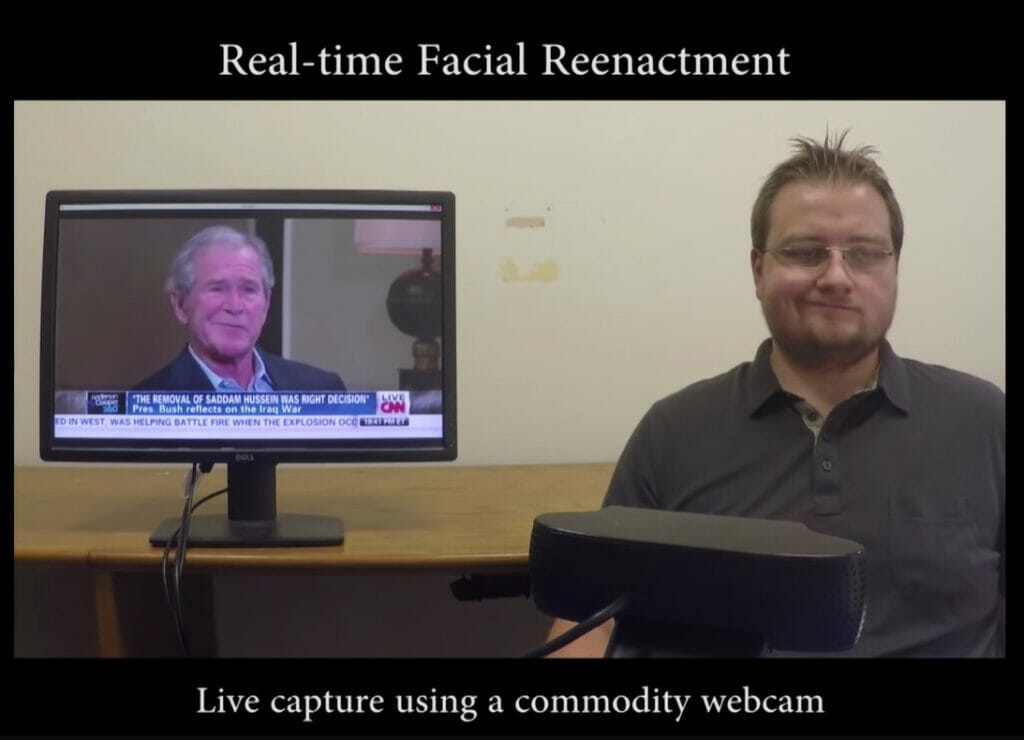Tech giant Apple was recently awarded a patent for making deepfakes, but is unknown what the company hopes to achieve with this.
The WinePress reported earlier this year on what a deepfake is, so definitely check out that report below, but it is essentially a nickname for when someone does a really good job emulating and mimicking another person’s speech and mannerisms, looking so realistic most people would believe it to be the real thing.
The patent was officially granted on October 18th titled “Face Image Generation With Pose And Expression Control.”
One aspect of the disclosure is a non-transitory computer-readable storage medium including program instructions.
Operations performed by execution of the program instructions include obtaining an input image that depicts a face of a subject, having an initial facial expression and an initial pose, determining a reference shape description based on the input image, determining a target shape description based on the reference shape description, a facial expression difference, and a pose difference, generating a rendered target shape image using the target shape description, and generating an output image based on the input image and the rendered target shape using an image generator, wherein the output image is a simulated image of the subject of the input image that has a final expression that is based on the initial facial expression and the facial expression difference, and a final pose that is based on the initial pose and the pose difference.
The abstract reads
SEE: Apple Is Now Looking To Launch A Subscription Service To Use Their IPhones And Other Products
Jim Nash for Biometric Update speculates what Apple would use this patented technology for:
Apple has been awarded a patent for making deepfakes, and the best the world can hope for out of this is Apple using it only as a way to bankrupt criminal synthetic media rings.
Two reasons: There is no more reason to trust Apple with deepfakes than any other company. And the world’s proposed defenses to malicious algorithms are either extremely short-term fixes or hopes.
Apple produces live-action and animated video content and owns display space on millions of palms and on a lot of wrists. It soon will own the space belted to people’s foreheads. Without doubt, Apple will be digitizing faces for the metaverse, games, movies and app avatars.
In other words, it will normalize the biggest threat to a collective reality since Facebook. Look how that is playing out. Again and again, information technologies deliver new dangers with each advance.
Then there is Gotcha, a system and practices proposed by well-meaning New York University researchers (working down stream from similar research at Ben-Gurion University) hoping to tame the deepfake threat.
Gotcha attacks real-time deepfake streaming algorithms by forcing the code to reveal itself.
There are many examples for how this might be done, and they can be found in an excellent look at the development by AI industry publisher Unite.AI. But arguably the best one is this: Two people get on a video call. Each pushes a finger into his or her cheek or makes an unusual face.
Because the training of a deepfake algorithm today is unlikely to include mimicking all gestures and expressions, it is going to display something screwy.
If this sounds like video Captcha, the best most-hated reality check on the internet, that is because it is.
In fairness to the NYU scientists, they admit that no one from a branch manager or village mayor on up would ever submit to making faces in front of a camera – even doing something benign like craning to look up or cover some of their face with a hand.
Passive methods of pushing models beyond their training include superimposing text, hiding portions of faces behind digital cutouts and overloading frames being processed.
The researchers say their method has shown it can push malicious software to the point that anyone looking at even a single frame would know they were looking at code and not a person.
The problem here is that comprehensive training of models – implanting most or all of the unexpected things a person could do in front of camera – is probably coming sooner than anyone imagines.
AUTHOR COMMENTARY
Going beyond what Biometric Update says will most likely happen – obviously our digital news media has been faked for a very long time, and deepfakes are certainly used habitually to deceive the masses. Now Apple no doubt looks to do the same thing, as more tech companies are inching the world closer to accepting the metaverse and a totally digitized world.
For thus saith the LORD of hosts, the God of Israel; Let not your prophets and your diviners, that be in the midst of you, deceive you, neither hearken to your dreams which ye cause to be dreamed.
Jeremiah 29:8
[7] Who goeth a warfare any time at his own charges? who planteth a vineyard, and eateth not of the fruit thereof? or who feedeth a flock, and eateth not of the milk of the flock? [8] Say I these things as a man? or saith not the law the same also? [9] For it is written in the law of Moses, Thou shalt not muzzle the mouth of the ox that treadeth out the corn. Doth God take care for oxen? [10] Or saith he it altogether for our sakes? For our sakes, no doubt, this is written: that he that ploweth should plow in hope; and that he that thresheth in hope should be partaker of his hope. (1 Corinthians 9:7-10).
The WinePress needs your support! If God has laid it on your heart to want to contribute, please prayerfully consider donating to this ministry. If you cannot gift a monetary donation, then please donate your fervent prayers to keep this ministry going! Thank you and may God bless you.









it may be used for the image of the beast.